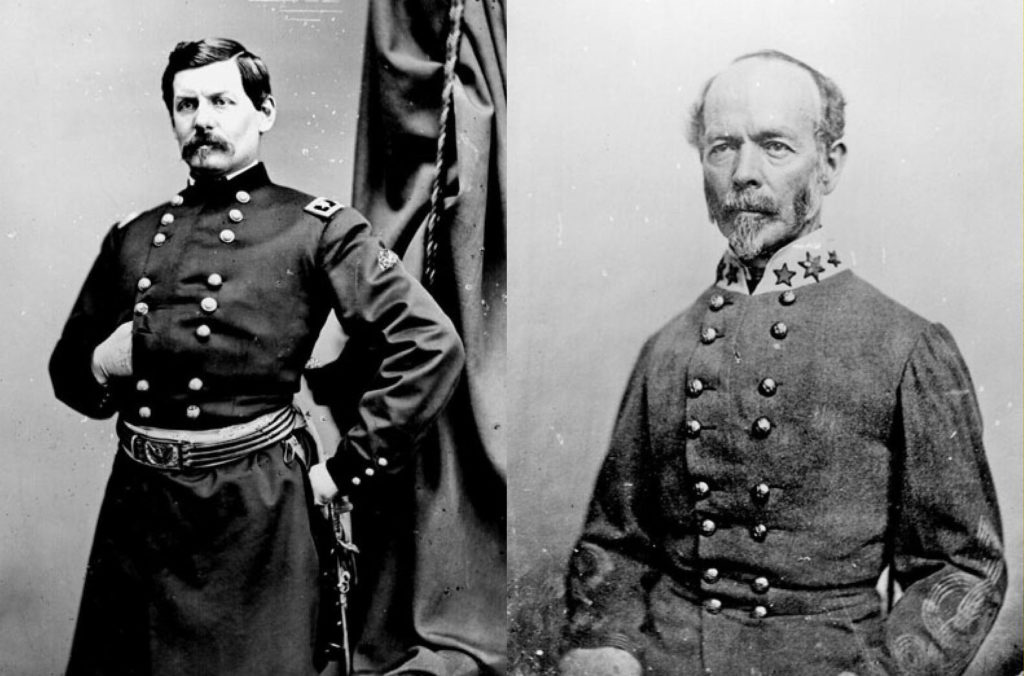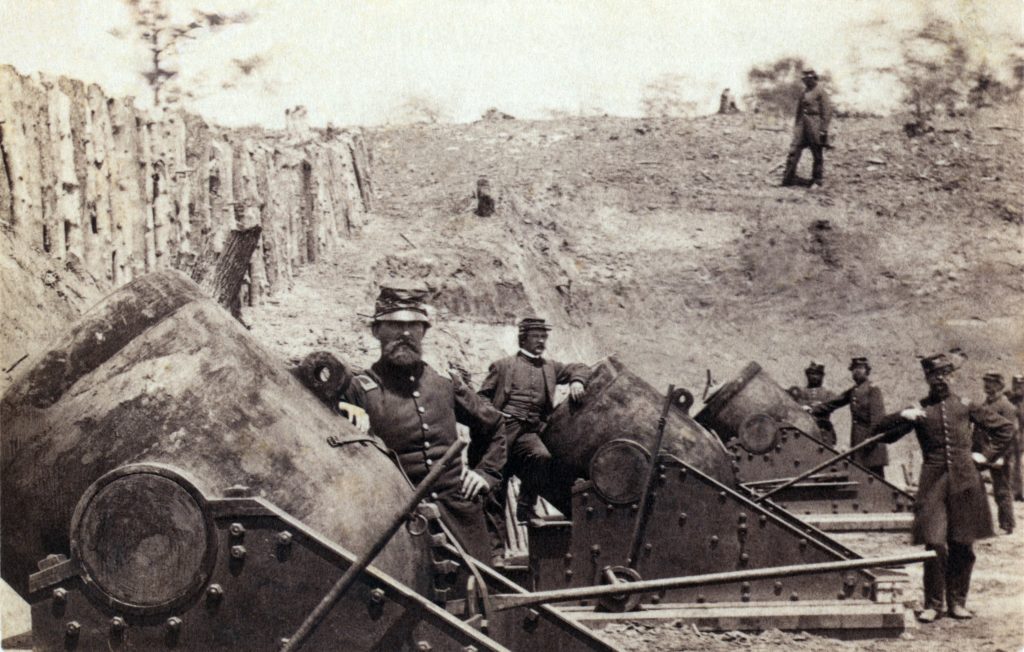It’s not often that BGES extraordinaire Len Riedel, Founder and Executive Director of the organization, steps out into the field as a tour leader. We have that honor with the upcoming tour, “The 1862 Peninsula and Seven Days Campaigns,” which he will be presenting with Paul Severance on March 20 to 26, 2022. Len, of course, is a gifted historian. He is a graduate of the Virginia Military Institute and Old Dominion University, where he obtained his MA degree. He is also a retired USAF officer, and he has produced four books with National Geographic, including The Civil War: A Traveler’s Guide (2016). What is it about this tour that fascinates Len? Why this tour? The BGES Blog caught up with Len to gain some insight.

BGES Blog: Give us the 3-sentence lowdown of your tour.
LR: The Peninsula and Seven Days tour is a rare opportunity to experience an entire military campaign from inception to completion. The campaign fulfills Abraham Lincoln’s expectation that his armies would take the field by Washington’s birthday and gave the Union General in Chief a full audition of his means of fighting a war with a view to the end of that conflict. After the campaign, McClellan’s competence is clearly in question.
BGES Blog: What should attendees expect on your tour?
LR: It has taken a while, but over the past 20 years key portions of the Peninsula portion of the campaign have been preserved and marked. We will link them for you to show how and why the lower Peninsula was important to the Confederacy and uncover the drama of early decisions. Travelers will gain a new appreciation for the early portion of the campaign, and then they will see the sharp contrast in leadership styles between Joseph E. Johnston and Robert E. Lee.
BGES Blog: What are some tour highlights?
LR: I believe the ability to tie the Confederate points in space to the larger campaign will allow attendees to clearly see the Confederates’ plans, the restrictions the Federals operated under, and the adaptations each side made. We will do an excellent job revealing the fighting for Williamsburg and will clearly show you why Robert E. Lee reported, “Under ordinary circumstances, the enemy army should have been destroyed.” Finally,I think you will marvel at the manner in which Stonewall Jackson brought his Valley army to Richmond.

BGES Blog: Can you give a quick vignette that might give us a flavor of the tour?
LR: I don’t like Joe Johnston. I think he was the wrong man for command everywhere he was assigned. He had already abandoned his front against McClellan without permission in Northern Virginia. At Yorktown, he did it again when the Confederacy had a strategic imperative in holding the Peninsula as long as possible. As he withdrew, I will explain to you and show you a careless mistake Johnston made that could have and should have resulted in the destruction of the retreating Confederates. It is a trait that plays out again and again whenever Johnston is in the presence of the enemy. You will have to come to our program to learn what it is—it is major!
BGES Blog: You have such a vast knowledge of the Civil War, and yet you only make rare field appearances. Why this one
LR: I may have created BGES, but first and foremost I am a historian. Could I have my own way, I would lead lots of tours; but there is too much paperwork in Chatham and there are excellent historians out there—they are a pleasure to watch and work with. I grew up in Norfolk and was born in New Orleans. I did my master’s thesis on John Magruder and the Defense of the Virginia Peninsula. I continue to study the campaign and the related battlefields. This was an opportunity too good to pass up. Of course, working with Paul Severance is a special treat in and of itself. He wants to ride shotgun with me on the Peninsula and, conversely, we share some real interests in the Seven Days. I personally believe I have the answer to a question of longstanding controversy about Stonewall Jackson’s performance during the Seven Days. We will probe that.
BGES Blog: The goal of the Peninsula Campaign was to quickly capture the Confederate capital and bring a quick end to the conflict. How would you respond to the comment that McClellan’s timidity led to Union military failure in the Peninsula Campaign? How does the tour address this?
LR: That is a very robust question. McClellan was a Napoleonic thinker. He had been an observer of European fighting. He did believe in one great battle resulting in the capture of the enemy’s capital. By massing overwhelming force, he expected to crush the enemy army. Theoretically, that was a great plan, but McClellan lacked the moral courage to risk failure. Every leader is looking to have a scapegoat in the event of failure.McClellan created phantom hoards of troops in massive Confederate armies. Larger begets the need for larger forces to fight them. When McClellan was denied the control of all the troops he expected, he dropped into a defensive crouch that turned the initiative over a man willing to accept it—Robert E. Lee. So yes, McClellan’s timidity led to the failure of the campaign. We will address this at both the Yorktown siege and throughout the examination of the Seven Days. In this instance, our inclusion of Stuart’s ride around McClellan’s army will unveil important data points that caused McClellan to scrap his advance lines and move toward the James River—a move that Lee found comported exactly with his plans—and re-enter Jackson. More to be discussed during the program.

BGES Blog: What does your tour offer that other tours don’t?
LR: A study rather than a tour.
BGES Blog: What are you especially excited to share with your tour attendee
LR: Jackson’s move to Richmond, access to overlooked redoubts along the Williamsburg line, Confederate rifle pits generally obscured by the Revolutionary War interpretation of Yorktown, a closer look at the Chickahominy River as an obstacle for the Confederates, and a lifeline for the Federals.
BGES Blog: What do you hope your tour adds to the overarching understanding of the Civil War?
LR: America’s idea of how a war should be fought changes once McClellan and his acolytes like Don Carlos Buell are beaten in battle. Their way of war and anticipation of conciliation with the South affected the first 18 months of war. We will discuss that. Conversely, we will see the debunking of the disparaging labeling of Robert E. Lee as “Granny” Lee. Lee roars out of the gate aggressively and full of audacity; he overwhelms his opponents.
BGES Blog: Any final words?
LR: Each BGES program is a study with a unique cohort. With us you cannot risk missing a program that interests you because the likelihood we will do it again in the same way with the same historians is low. The small groups—usually 10 to 15 at most—create an environment that is as close to a private tour as can be created. The attendees will come away much smarter than when they started the week.
BGES Blog: Thanks Len!
